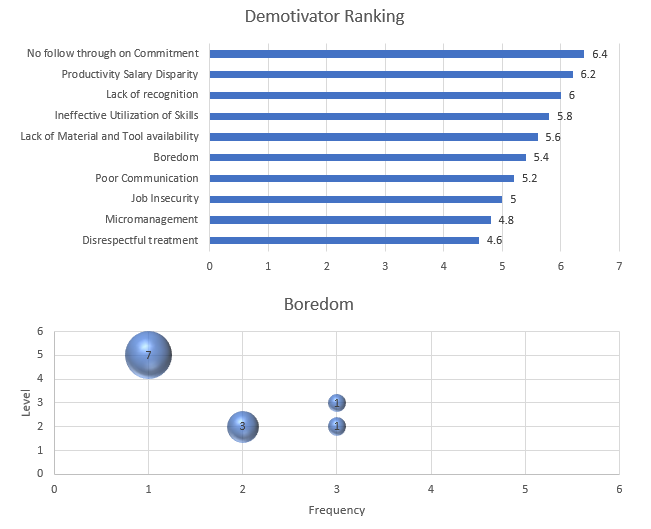A demotivator is like an unwanted load on a sinking ship. With it, the ship will sink. Without it, the ship will not sink but it will not help the ship to move forward. To move the ship forward, we need motivators.
So what is Moving Demotivators? Moving Demotivators is a retrospective that you can run with your Scrum team to identify what are the current demotivators that are having a negative impact on the team. With the results from this retrospective, the organization can work on removing these demotivators and then move on to identify what will motivate the team.
Moving Demotivators is inspired by Management 3.0 Practice: Moving Motivators and based on Herzberg’s Motivators and Hygiene Factors. For more details on Moving Motivators, you can follow this link https://management30.com/practice/moving-motivators/.
What is Herzberg’s Motivators and Hygiene Factors
According to Herzberg’s Motivators and Hygiene Factors, job satisfaction and job dissatisfaction are not opposites.
- The opposite of Satisfaction is No Satisfaction.
- The opposite of Dissatisfaction is No Dissatisfaction
Remedying the causes of dissatisfaction will not create satisfaction. Nor will adding the factors of satisfaction eliminate dissatisfaction. If you have a hostile work environment, giving someone a promotion will not make him or her satisfied. If you create a healthy work environment but do not provide members of your team with any of the satisfaction factors, the work they’re doing will still not be satisfying.

How to use Moving Demotivators to identify the demotivators
Step One (5 mins)
Which demotivators are important to you? Place the cards in the order from Left (least demotivating) to Right (most demotivating.)
List of demotivators
- Boredom
- Poor communication
- Job insecurity
- Micromanagement
- Disrespectful treatment
- Lack of material and tool availability
- Lack of recognition
- Ineffective utilization of skills
- Productivity Salary Disparity
- No follow through on commitments
Step Two (5 mins)
How is the current demotivation level of each demotivator for you? Everybody on his own: Think about the question and assign a demotivation level and frequency to each motivator.
Demotivation Level
- Completely not demotivated
- Moderately demotivated
- Demotivated
- Demotivated over average
- Very highly demotivated
Frequency
- Never
- Rarely
- Occasionally
- Frequently
- Very Frequently
Step Three (30 mins depending on group size)
Then one by one everybody talks about the order and demotivation levels he/she chose. The other team-mates standing around the one who’s talking and ask questions, if clarifications are required. If there are more than 7 persons in the team, split the team in two groups.
Step Four (20 mins)
Reflection phase with the whole group.
- What did you observe?
- What was interesting?
- What was surprising?
Evaluation (after the retrospective)
Based on the evaluation sheet the scrum master prepares an evaluation diagram and prints it. This can be used to work on demotivators that are important for the team but have a low level or the make shifts in the demotivation levels after changes visible.


Sample Printout for Demotivators

Thanks for sharing! Impressive work!
LikeLike